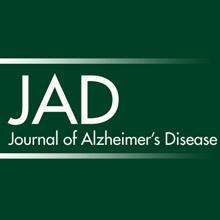 “Cannabis use induces a plethora of actions on the CNS via its active chemical ingredients, the so-called phytocannabinoids.
“Cannabis use induces a plethora of actions on the CNS via its active chemical ingredients, the so-called phytocannabinoids.
These compounds have been frequently associated with the intoxicating properties of cannabis preparations. However, not all phytocannabinoids are psychotropic, and, irrespective of whether they are psychotropic or not, they have also shown numerous therapeutic properties.
These properties are mostly associated with their ability to modulate the activity of an intercellular communication system, the so-called endocannabinoid system, which is highly active in the CNS and has been found altered in many neurological disorders.
Specifically, this includes the neuropsychopharmacology field, with diseases such as schizophrenia and related psychoses, anxiety-related disorders, mood disorders, addiction, sleep disorders, post-traumatic stress disorder, anorexia nervosa and other feeding-related disorders, dementia, epileptic syndromes, as well as autism, fragile X syndrome and other neurodevelopment-related disorders.
Here, we gather, from a pharmacological and biochemical standpoint, the recent advances in the study of the therapeutic relevance of the endocannabinoid system in the CNS, with especial emphasis on the neuropsychopharmacology field. We also illustrate the efforts that are currently being made to investigate at the clinical level the potential therapeutic benefits derived from elevating or inhibiting endocannabinoid signaling in animal models of neuropsychiatric disorders.”
https://www.ncbi.nlm.nih.gov/pubmed/32057592
https://www.sciencedirect.com/science/article/abs/pii/S0924977X20300365?via%3Dihub
 “Psoriasis is a chronic inflammatory skin disease characterized by dysregulated keratinocyte differentiation, but oxidative stress also plays an important role in the pathogenesis of this disease.
“Psoriasis is a chronic inflammatory skin disease characterized by dysregulated keratinocyte differentiation, but oxidative stress also plays an important role in the pathogenesis of this disease.
 “Alzheimer’s disease (AD) is characterized by progressive cognitive decline and pathologically by the accumulation of amyloid-β (Aβ) and tau hyperphosphorylation causing neurodegeneration and neuroinflammation. Current AD treatments do not stop or reverse the disease progression, highlighting the need for more effective therapeutics.
“Alzheimer’s disease (AD) is characterized by progressive cognitive decline and pathologically by the accumulation of amyloid-β (Aβ) and tau hyperphosphorylation causing neurodegeneration and neuroinflammation. Current AD treatments do not stop or reverse the disease progression, highlighting the need for more effective therapeutics.
 “Cannabis sativa L. (C. sativa) contains an array of plant-derived (phyto)
“Cannabis sativa L. (C. sativa) contains an array of plant-derived (phyto) 
 “The cellular microenvironment plays a critical role in the maintenance of bone marrow-derived mesenchymal stem cells (BM-MSCs) and their subsequent cell lineage differentiation. Recent studies suggested that individuals with adipocyte-related metabolic disorders have altered function and adipogenic potential of adipose stem cell subpopulations, primarily BM-MSCs, increasing the risk of heart attack, stroke or diabetes.
“The cellular microenvironment plays a critical role in the maintenance of bone marrow-derived mesenchymal stem cells (BM-MSCs) and their subsequent cell lineage differentiation. Recent studies suggested that individuals with adipocyte-related metabolic disorders have altered function and adipogenic potential of adipose stem cell subpopulations, primarily BM-MSCs, increasing the risk of heart attack, stroke or diabetes.
 “Phytocannabinoids (and synthetic analogs thereof) are gaining significant attention as promising leads in modern medicine. Considering this, new directions for the design of phytocannabinoid-inspired molecules is of immediate interest. In this regard, we have hypothesized that axially-chiral-cannabinols (ax-CBNs), unnatural and unknown isomers of cannabinol (CBN) may be valuable scaffolds for
“Phytocannabinoids (and synthetic analogs thereof) are gaining significant attention as promising leads in modern medicine. Considering this, new directions for the design of phytocannabinoid-inspired molecules is of immediate interest. In this regard, we have hypothesized that axially-chiral-cannabinols (ax-CBNs), unnatural and unknown isomers of cannabinol (CBN) may be valuable scaffolds for 
 “The endocannabinoid system (ES) is a cell-signalling system widely distributed in biological tissues that includes endogenous ligands, receptors, and biosynthetic and hydrolysing machineries.
“The endocannabinoid system (ES) is a cell-signalling system widely distributed in biological tissues that includes endogenous ligands, receptors, and biosynthetic and hydrolysing machineries.